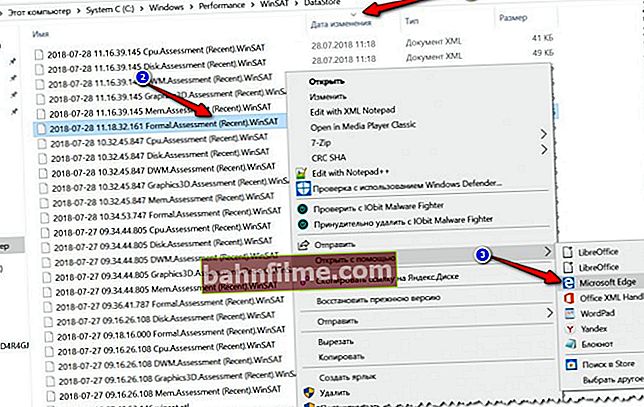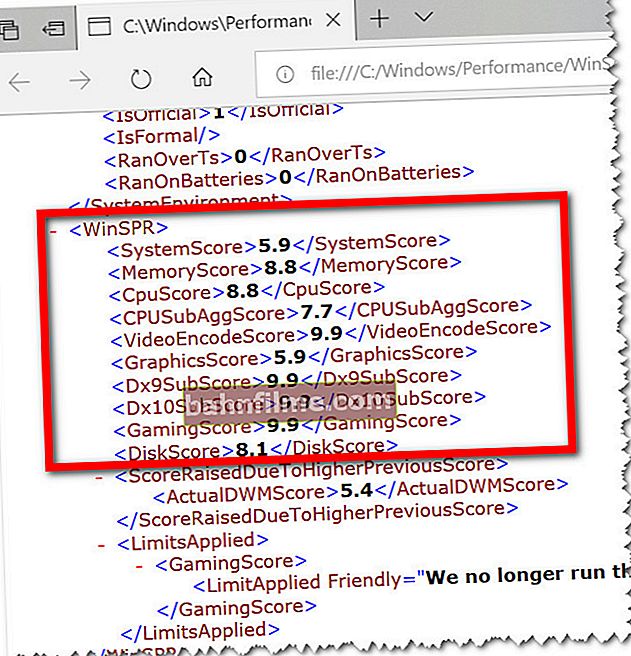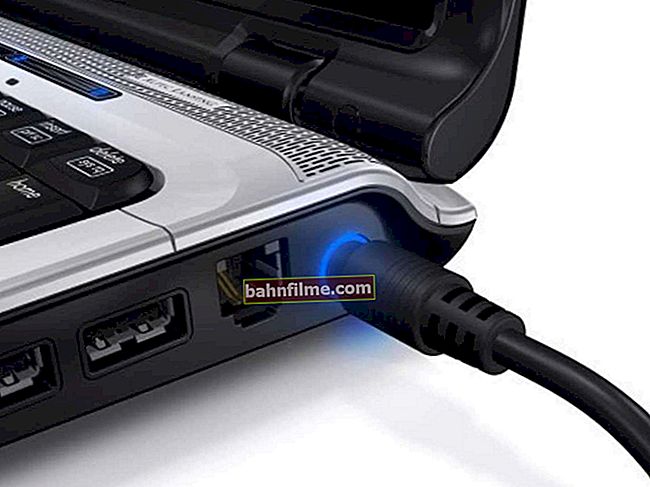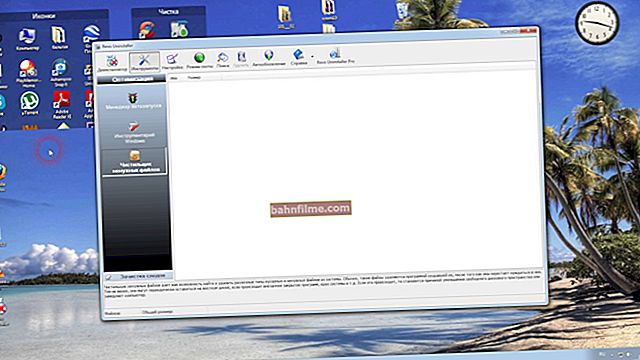 Good day!
Good day!
Quite often, it is necessary to find out (or, better to say, evaluate) the approximate performance of a computer: for example, to estimate its capabilities when buying (after all, not all users thoroughly know from and to the most common pieces of iron today).
The easiest way to do this is to use performance indices (which show an objective assessment of the hardware of your device in today's realities).
Here are some estimates for an example:
- if you need a gaming PC / laptop: look at a performance index of at least 7 (7.5 *);
- for three-dimensional films, music, etc.: from 5;
- if for office work: even 3 is enough;
- below 3 - with this computer, most likely, nothing awaits except torment ... 👀
Now, actually, about how to find out this estimate ...
*
👉 Note!
1) I draw your attention to the fact that the article does not consider a stress test that checks the reliability of the system (and any "piece of hardware" in particular). Our goal today is to quickly diagnose and assess iron.
2) If you want to know the real performance of your CPU in MHz - I recommend this note.
*
Rapid performance assessment
Method 1
Removed from sight in modern Windows 10 performance index (which, in my opinion, is very vain). Therefore, in this first method, I will recommend a third party utility that works on almost all versions of Windows.
*
👉 ExperienceIndexOK
Official site: //www.softwareok.com/

Screen from the developer's site
A very small utility (~ 63KB) that does not require installation into the system (which is very convenient!).
After its launch, it automatically evaluates the performance index of the processor, video card, disk subsystem, and memory. By the lowest index - the overall score is given.
The utility works in all modern OS: Windows XP, 7, 8, 10 (32/64 bits). Supports Russian, there are convenient links to the task manager, device manager, etc.
In the example below, ExperienceIndexOK rated the performance of the disk system at 7.8, and it was on this that it gave the overall rating.
In general, the utility is extremely convenient when buying a computer / laptop - you can write it to a USB flash drive and take it with you for diagnostics.

An example of the utility
*
Method 2 (without third-party utilities)
It is not always possible to download third-party utilities (and even more so run them, especially if the PC is not yours ...). In this case, you can take advantage of the opportunities that Windows gives us ...
*
For Windows Vista / 7
These Windows operating systems have a built-in score - the performance index. To view it, you need to open "My Computer" and follow the link "Properties of the system" in the top menu (see the screen below 👇).

System Properties (My Computer Windows 7) / Clickable
Further in the section "System" you will see overall assessment (in the example below, this is 4.9 points).
If you want to view in more detail the performance index of each PC component - click on the link next to the assessment Windows Performance Index .

System - performance index (clickable)
In the next window that opens, you will see several estimates for each piece of hardware separately: CPU, memory, graphics (video card), hard drive.

Assessment for each piece of hardware (Windows 7) / Clickable
*
For Windows 8/10
In Windows 8/10, the performance index was "removed" from the eyes (which, in my opinion, is in vain). But using a few commands, you can get this data ...
1) First you need to open Windows PowerShell (or Command Prompt) - in Windows 10, you just need to right-click on START (or press Win + X).
👉 To help!
How to open command prompt (for different Windows OS).

Windows Powershell (administrator). Windows 10
2) Next enter the commandwinsat formal and press Enter. After that, computer testing should start - 1 ÷ 2 minutes. have to wait ... 👀

winsat formal - command to run PC testing

The same command line command (CMD)
3) If you worked through Windows PowerShell: then enter the command -Get-CimInstance Win32_WinSAT and press Enter.Several lines with indices should appear (see example below 👇).
- CPU Score - score for the processor;
- Disk Score - for hard drive;
- Graphics Score - for a video card;
- Memory Score - for RAM;
- SPR Level - general grade (set at the lowest value from the previous ones)

Get-CimInstance Win32_WinSAT - view test results
If you worked through the command line:
- open up folder C: \ Windows \ Performance \ WinSAT \ DataStore in the explorer (note: you can just copy the address and paste it into the explorer's address bar);
- Further find the file "... Formal ..." and open it with Microsoft Edge (to do this, just right-click on this file and use the context menu, as in the example below 👇).

Opening the grades file in Edge (clickable)
- then find the subtitle "WinSPR" (almost at the beginning of the file). Here you can see the performance index for each PC component (similar to what is shown in Windows PowerShell).

Almost at the beginning of the file you can find estimates
*
👉 Supplement!
By the way, XML files are much more convenient to look at not in the Edge browser, but in a special XML Notepad 2007 (link to CNET website).
It allows you to view the same indices very conveniently - see the screenshot below (in my opinion, if you compare it with the previous one, everything looks much clearer!).

XML Notepad 2007 - View XML File
*
That's all for now ...
Good luck!
👋
First publication: 28.07.2018
Correction: 09/28/2020











